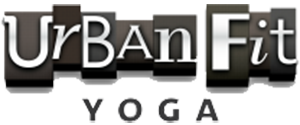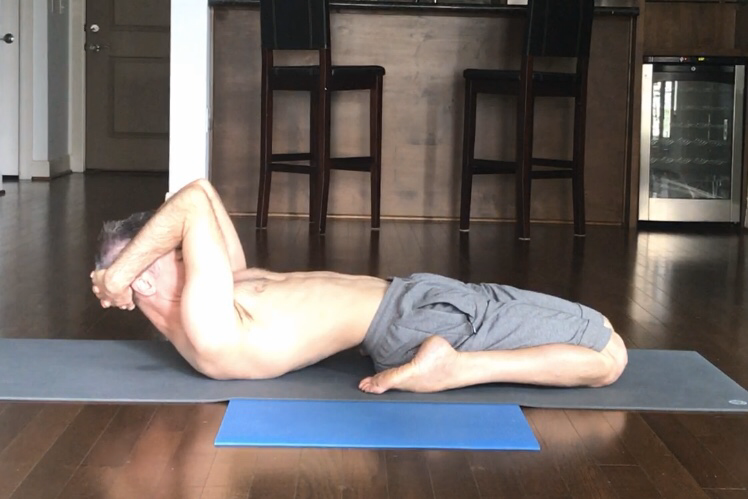|
Three primary joints control the function of the lower body: the hips, knees, and ankles. If alignment is off in any of these areas, pain brings the first sign of what can become disability in old age, especially in the knees and hips. Full, artificial replacements are becoming more and more common, which raises some important questions.
What are we doing as a culture to promote misalignment? And most importantly, what are we not doing to promote joint health in these areas? The causes are complicated, but there is a common solution. Yoga for hip pain can be helpful for everybody, and can go a long way in keeping you mobile as you age.
What causes hip pain?
The causes of hip pain vary greatly, and depend on a wide range of factors. Your activity level, the type of activities you perform, career, injury history, and posture (among other factors) all have a significant impact on the type of load you place on your hips on a daily basis. Most often, evaluating these factors can inform us as to the type of injury we've suffered, whether chronic or acute, and from there we can better evaluate the types of yoga for hip pain that can be helpful.
In the following sections, I'll describe some common causes of misalignment, and then include some tips on the types of yoga and specific poses you can do for rehabilitation - similar to our back pain blog. Keep in mind that every body is unique, and there may be multiple contributing factors that make your situation unique. Most commonly, hip pain becomes a mild, but chronic inhibitor of activity that can be compounded over time. In those cases, yoga for hip pain can give you the best chance of addressing the problem and taking the steps necessary to improve in the long term. However, if your pain is ever acute and severe while performing certain activities, or if you have to resort to pain medication to deal with it, you should see a doctor, physical therapist, chiropractor, or other medical professional who can help you diagnose the injury. Past Injuries
If you've had an acute injury in the past to a knee or ankle that required you to compromise your gait for a prolonged period of time, there's a good chance it's the underlying cause of your hip pain. Misalignment often occurs gradually, and our gait has a lot to do with it. If you have a bad ankle or knee, it means you're probably putting a disporportionate amount of weight and pressure on either hip joint.
The following poses/postures address balance, which is very important in strengthening the muscles and tendons surrounding your ankle, knee, and hip joints. Standing Figure-4: Start standing and cross your ankle over your opposing knee, and then squat gently as you would for chair pose, keeping your spine as straight as possible. If needed, use a chair or wall for balance. It can also be done seated, or supine (lying down) if standing makes the posture too intense. Half Moon: Done best against a wall, measure one leg length from the wall, and position yourself there. Single Leg Balances/Tree Pose: If you've had injured knees or ankles, balancing on one leg while lifting and bending the other leg can do wonders for the smaller muscles and tendons around your joints. Tree Pose involves standing on one leg while opening the opposite hip and placing the bottom of the foot on the inner calf or upper leg (not the knee!) of the standing leg. Balancing on one leg promotes strength, while opening the hip of the other leg can give you increased flexibility in your hip socket. Activity Level/Type of Activities
Depending on your level of activity, you probably put more stress on your hips than others. If you train in the gym, your pain could be coming from improper posture while performing certain weight bearing activities. If you do squats, lunges, or dead lifts, be absolutely positive that you're practicing the right posture before adding weight. It's not uncommon for people to strengthen large muscle groups successfully, while at the same time inflicting serious damage on the cartilage surrounding their joints.
If you're a cyclist or avid runner, diagnosing hip pain is often simpler. Because the hip action for these activities involves strict, repetitive forward motion, chronic pain most often comes from a lack of lateral movement. Our joints were designed to move us forward, backward, side to side, and at every angle in between. The following poses can be done before and/or after you run or bike, and are great for weight-lifters to do with body weight. Side Lunge or Skandasana: Start standing, take a step to the side and begin to lunge onto one leg. As you get closer to the ground, keep the other leg straight and rest on the heel, stretching the inside parts of the leg from top to bottom, while opening the outer hip. You'll stretch and strengthen the hip in the straight leg, while promoting balance and mobility in the knee, ankle, and hip of the bent leg. Malasana or Squat Pose: This natural position has immense benefits for the hips and knees. With feet shoulder-width apart and toes turned out at 45-degrees, lower your hips toward the floor and use your elbows to press your knees wide and keep your spine straight. If your heels lift it may feel better to place a rolled towel or blanket under them and relax into the pose. This is a great pose to do throughout your day. Wide-Legged Forward Fold: From standing, spread both legs until you feel a light stretch in the groin and inner leg, and then lean forward until you can rest your hands on the ground. Use blocks or stacked books to bring the floor up to your hands as needed. Look at your feet and make them slightly pigeon-toed, lifting the inner arches. Be present with your body and take your time increasing the stretch.
Hatha, Iyengar, and Slow Flow/Restorative practices are best for people who are already active, but need to counteract particular movements with a full-body practice. A perfect example would be Urban Fit Yoga's Stretch Flow Yin Yoga class.
Career Type
If you work a traditional job, you probably spend 40 or more hours a week in the same place, doing the same activities. If you drive to and from work, that adds an additional amount of time sitting in a car before and after work. If you sit in a cushy chair at a desk most of the day, how you sit is extremely important.
If the lumbar spine in your lower back is slouched, the added pressure on your low back can cause back pain that informs how you walk and how well you move in general. If you stand or walk around all day, the type of shoes you wear probably has the most to do with your hip pain. High-heels, or other rigid shoes with tapered toe boxes have been shown to prevent how your foot bears weight, which in turn effects the entire chain of lower body joints all the way to your hips. If allowed in your work space, wearing flat shoes with a wide toe box can do a lot to promote proper alignment. If you sit all day, all of the aformentioned poses can be helpful in strengthening the joints that you don't use at work. If you stand all day, the poses listed in the above section can be extremely helpful, as they promote the lateral strengthening of your hips and knees. In general, a full body practice is the best way to use yoga for hip pain if your lengthy work week is a contributor. Hatha, Vinyasa Flow, and beginner Bikram Hot Yoga (both of which you can find here) offer the most well-rounded practices that most often have an entire portion focusing on the hips. Posture
Obviously, your status in the three previous sections informs your overall posture. The way we carry ourselves is unique to different body types and the muscle groups we develop in our daily activities. By examining more closely how you sit or stand at work, how past injuries have effected you, and the types of physical activities you prefer to stay healthy, you can make better decisions regarding your overall hip health.
The following poses/postures are good for everybody, and when done together address the flexibility of the entire hip socket, lengthening the hip flexors and increasing mobility. Pigeon Pose: From downward-facing dog or tabletop (hands and knees on the ground) bring your right knee toward your right elbow and place that leg on the ground, keep your toes flexed and aim for a right angle at the knee over time. Your left leg should be straight behind you with the top of the foot flat. Place a folded blanket, towel or bolster under the hip to support it. Lean forward on hands, elbows, or blocks and relax into the sensation. Goddess Pose: From standing, spread your legs past hip width and point your toes outward, opening the knees and hips. Raise your arms like field goals, and try to keep your spine straight, with your upper body positioned well above your hips. By leaning slightly from side to side and squatting slightly as your body allows, you can gradually gain more flexibility and increase the intensity of the pose. Frog Pose: This pose is much like Goddess Pose only tipped forward. The inside of your knees and ankles should be on the ground, and you can lean on your hands, elbows, or chest as is comfortable for you. It is advised to pad under the knees and ankles with folded blankets or your mat. As you gain external flexibility in the hips, you can sink deeper into the pose. Review
If your hip pain is severe, see a doctor. If it's chronic and mild, but painful enough to discourage activity, adding gentle yoga to your weekly schedule can be a deciding factor in whether or not the injury develops into a full-blown medical crisis. The postures mentioned above are just suggestions, and if you're interested in being guided through a practice that targets your personal needs, I'd recommend a private, yoga session with Wayne Campbell who can work with you to achieve the best possible results.
Yoga and mindfulness go hand in hand, so listening to your body is an integral factor in seeing positive results. Moving too quickly into deep stretches can cause more harm than good. Most hip pain takes years of imbalance before it begins to affect mobility. If you're patient, and stay committed to seeing improvements over longer periods of time, you'll see the best results in the safest way possible.
1 Comment
10/29/2019 07:30:11 am
Low lunge is one of the easy beginner's postures that stretches your hips and groins. This is also the most effective yoga poses for wider hips. However, people who are suffered from a knee injury should avoid this posture.
Reply
Leave a Reply. |
ABOUT THE BLOGUrban Fit Yoga posts relevant, inspiring, and nourishing tools to support you along your healing journey. We believe that the benefits of yoga can extend far off your mat and we want to help! |
|
|
© 2018 Urban Fit Yoga (Texas Thai Sports, LLC)



